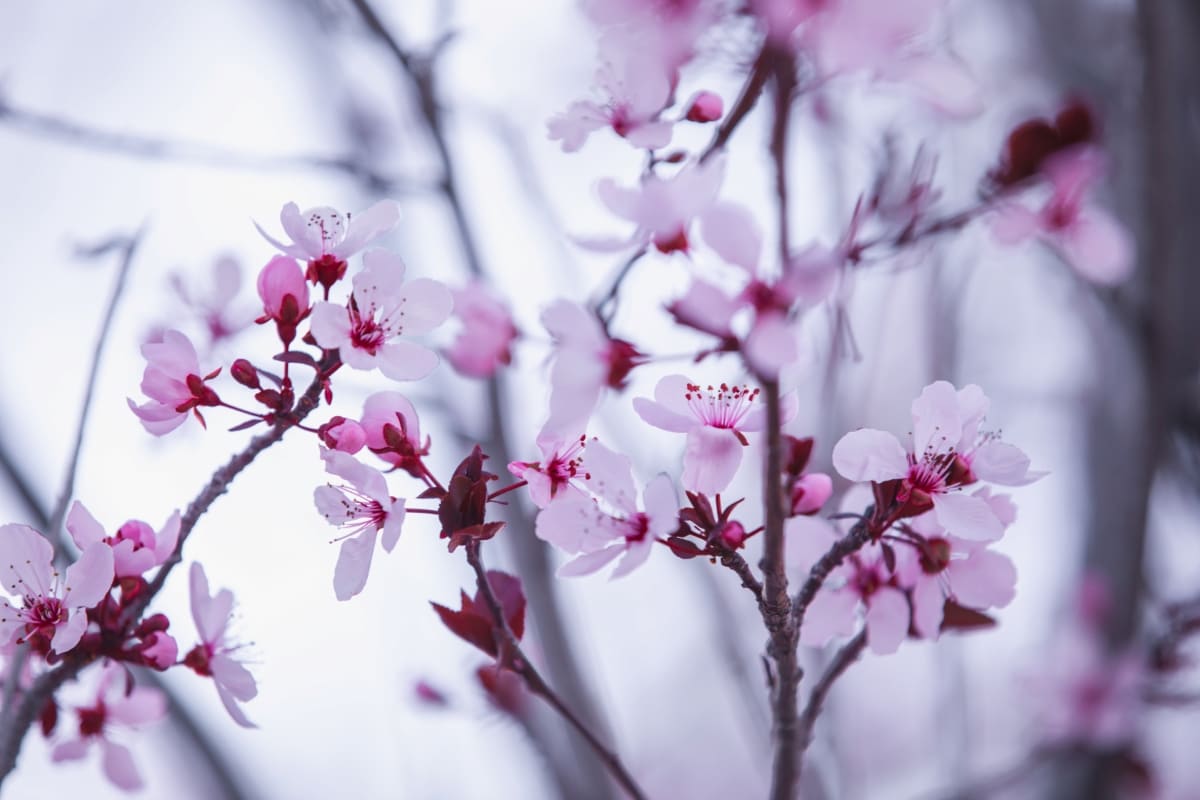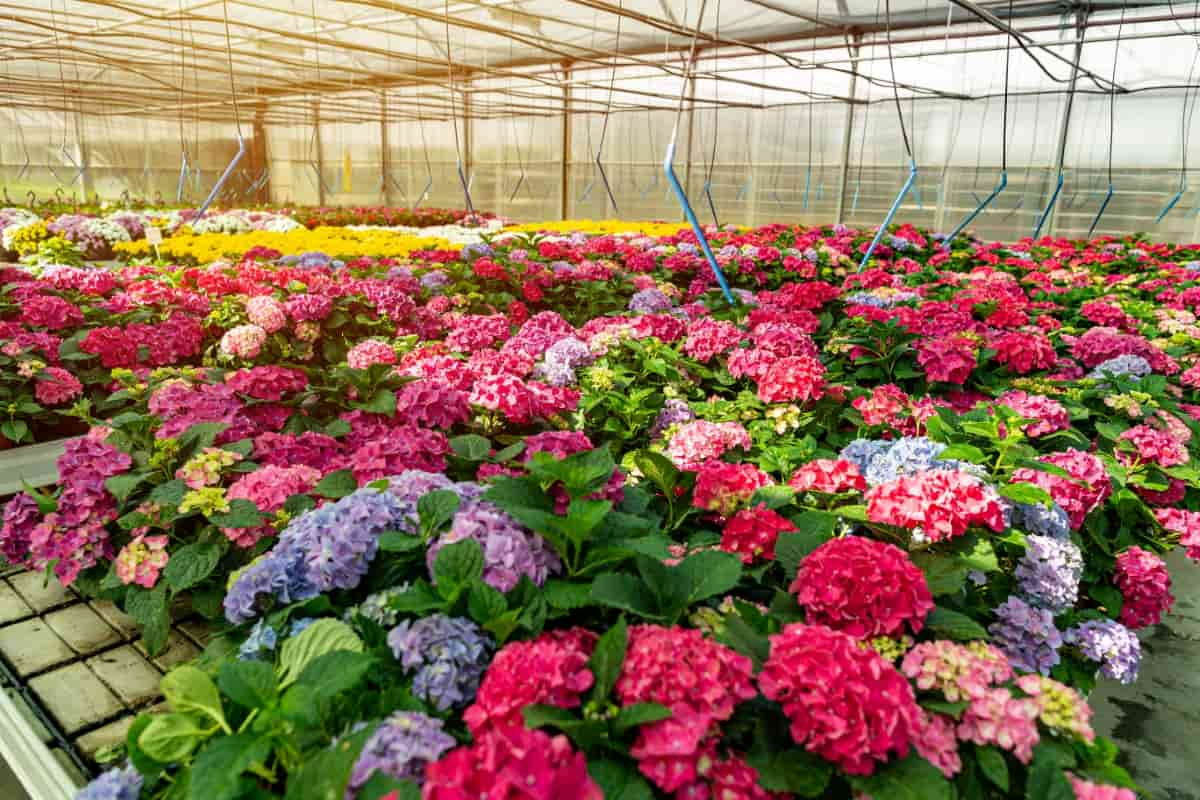Powdery mildew can be effectively prevented and managed through a holistic approach. Cultural practices like proper spacing and pruning are essential, along with monitoring environmental conditions. Integrated pest management strategies, resistant plant varieties, and organic fungicides like neem oil or sulfur-based solutions are also effective. Regular inspections and prompt action are crucial for preventing the spread of the fungal threat. This holistic approach fosters resilient and healthy landscapes.

Powdery Mildew in Ornamental Plants
Understand What Causes Powdery Mildew and How It Affects Ornamental Plants
Various fungi, primarily from the Erysiphales order, are responsible for powdery mildew, with each species affecting particular plants. These fungi thrive in moderate temperatures and high humidity, producing white, powdery patches on leaves, stems, and flowers. The presence of powdery mildew inhibits photosynthesis, reducing the plant’s ability to produce energy.
Additionally, the fungus weakens the plant’s structure, leading to distorted growth and premature leaf drop. Ornamental plants susceptible to powdery mildew include roses, lilacs, and zinnias. Understanding the causal factors and the impact on plants is crucial for implementing targeted prevention and management strategies, ensuring the health and longevity of ornamental landscapes.
Look for Signs and Symptoms to Identify Powdery Mildew in Ornamental Plants
Early identification of powdery mildew signs and symptoms is pivotal for effective management. Recognizable by its characteristic white, powdery residue on leaves, stems, and sometimes flowers, powdery mildew can lead to distorted growth and prematurely dropping leaves. As the disease progresses, affected plant parts may become discolored or stunted.
Regularly inspect ornamental plants, paying close attention to the undersides of leaves and areas with poor air circulation. Be vigilant for the early appearance of white powdery patches, ensuring prompt intervention to prevent the spread of healthy foliage. Powdery mildew can hurt the health and looks of ornamental plants, but if it is found early enough, it can be treated effectively, and preventative steps can be taken.
Environmental Conditions That Lead to Powdery Mildew in Ornamental Plants
Powdery mildew thrives in specific environmental conditions conducive to fungal growth. Temperatures from 60°F to 80°F (15°C to 27°C) and high humidity provide an ideal breeding ground for the fungi responsible for powdery mildew. Poor air circulation around plants, often exacerbated by dense foliage or overcrowded planting, further facilitates the spread of the disease.
In case you missed it: How to Use Baking Soda to Control Powdery Mildew on Roses: Benefits and Application

Understanding these environmental triggers is essential for prevention. Gardeners can mitigate these conditions by providing adequate spacing between plants, pruning to enhance air circulation, and selecting planting locations with ample sunlight. Monitoring and adjusting environmental factors are crucial to a comprehensive strategy to create an inhospitable environment for powdery mildew development.
Use Cultural Practices to Prevent Powdery Mildew in Ornamental Plants:
Cultural practices play a fundamental role in preventing powdery mildew in ornamental plants. Start by ensuring proper plant spacing for adequate air circulation, minimizing the favorable conditions for fungal growth. Regular pruning of affected or overcrowded plant parts helps improve ventilation and reduces the risk of powdery mildew spreading.
Watering plants at the base rather than overhead prevents prolonged leaf wetness, another factor conducive to powdery mildew. Mulching around plants helps maintain soil moisture and temperature, creating a healthier plant environment. Incorporating these cultural practices into routine garden maintenance forms a foundation for effective powdery mildew prevention, promoting overall plant health and resilience.
Minimize Powdery Mildew by Choosing Resistant Plant Varieties
Selecting ornamental plant varieties resistant to powdery mildew is a proactive measure to minimize the risk of infection. Numerous cultivars have inherent resistance or tolerance to the fungus, reducing the likelihood of powdery mildew development. Research and choose plant varieties known for their resilience against specific strains of powdery mildew prevalent in your region.
Consult with local nurseries or horticulturists for recommendations on resistant cultivars suitable for your ornamental garden. By incorporating resistant plant varieties into your landscape, you create an additional layer of defense, ensuring the longevity and vibrancy of your ornamental plantings.
Manage Powdery Mildew in Ornamental Plants Using Organic and Chemical Methods
Effectively managing powdery mildew often involves a combination of organic and chemical methods. Organic options, such as neem oil, sulfur-based fungicides, or baking soda solutions, provide eco-friendly alternatives for mild to moderate infestations. These substances disrupt fungal development without causing harm to beneficial organisms.
In cases of severe infestations, chemical fungicides may be necessary. Consult with local agricultural extension services or gardening experts to identify suitable chemical treatments and ensure proper application. A balanced approach, considering the severity of the infestation and potential environmental impact, allows gardeners to effectively tailor their powdery mildew management strategy.
Apply IPM Strategies for Powdery Mildew in Ornamental Plant
Integrated Pest Management (IPM) strategies offer a comprehensive and sustainable approach to powdery mildew control. Monitor plantings regularly for signs of powdery mildew and other potential issues. To create a resilient landscape, implement preventive measures, such as cultural practices and resistant plant varieties.
In case you missed it: How to Prevent Onion Downy Mildew: Prevention and Control Strategies

When intervention is necessary, choose organic treatments or chemical fungicides judiciously, considering their impact on the ecosystem. IPM emphasizes a proactive and environmentally conscious methodology, promoting ornamental plantings’ long-term health and vitality while effectively managing powdery mildew.
Monitor and Detect Powdery Mildew Early in Ornamental Plantings
Regular monitoring and early detection are crucial to a successful powdery mildew management strategy. Conduct routine inspections of ornamental plantings, paying close attention to susceptible plants and areas with known environmental triggers. Early signs, such as white powdery patches, may be subtle, underscoring the importance of thorough examinations.
Employing a vigilant approach allows for timely intervention, preventing the spread of powdery mildew to healthy plant parts or neighboring plants. By staying proactive and addressing the disease in its early stages, gardeners can minimize the impact of powdery mildew on ornamental landscapes.
Consider Seasonal Factors when Managing Powdery Mildew Throughout the Year
Effective powdery mildew management requires consideration of seasonal factors that influence fungal development. During warm and humid summers, vigilance is paramount, as these conditions are conducive to powdery mildew growth. Adjust prevention and treatment strategies based on seasonal variations, employing more rigorous measures during periods favorable to the fungus. Understanding the seasonal nuances of powdery mildew prevalence allows gardeners to tailor their approach, optimizing the effectiveness of preventive measures and interventions throughout the year.
Use Sustainable Approaches for Powdery Mildew in Ornamental Plants
Embracing sustainable approaches to powdery mildew management aligns with environmental consciousness and long-term garden health. Practices such as composting to enhance soil fertility, promoting biodiversity to establish a balanced ecosystem, and practicing water conservation contribute to overall garden resilience.
Sustainable gardening principles support the natural control of pests and diseases, including powdery mildew, by fostering a biodiverse and healthy environment. By adopting these sustainable approaches, gardeners manage powdery mildew effectively and contribute to preserving biodiversity and the ecological harmony of their ornamental landscapes.
Frequently Asked Questions (FAQ) on Managing Powdery Mildew in Ornamental Plants
Which Plants Are Susceptible to Powdery Mildew?
A variety of plants can be susceptible to powdery mildew, including ornamentals like roses, lilacs, zinnias, and various fruit and vegetable crops.
How Does Powdery Mildew Spread?
Powdery mildew spreads through airborne spores, and it thrives in conditions with moderate temperatures, high humidity, and poor air circulation.
In case you missed it: How to Treat Powdery Mildew in Plants: Homemade and Organic Remedies, and Tips

Conclusion
Powdery mildew in ornamental plants requires a proactive approach involving cultural practices, plant selection, and organic and chemical interventions. Regular checks, early detection, considering environmental conditions, and seasonal changes can help manage the disease. By embracing sustainable gardening principles, gardeners can cultivate vibrant, healthy, and aesthetically pleasing landscapes resilient to powdery mildew.
- Feed Your Flock for Less: Top 10 Tips to Save on Chicken Feed
- Ultimate Guide to Ossabaw Island Hog: Breeding, Raising, Diet, and Care
- Hatching Answers: The Top 10 Reasons Your Chickens Aren’t Laying Eggs
- Eggs and Economics: Breaking Down the Cost of Raising Backyard Chickens
- Defend Your Greens: Proven Methods to Keep Iguanas Out of Your Garden
- Ultimate Guide to Cinnamon Queen Chicken: A Comprehensive Guide for Beginners
- Ultimate Guide to California Tan Chicken: Breeding, Raising, Diet, Egg-Production and Care
- Ultimate Guide to Marsh Daisy Chicken: Breeding, Raising, Diet, and Care
- 10 Types of Chicken Farming Businesses You Can Start for Profits